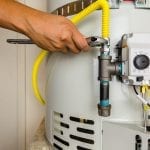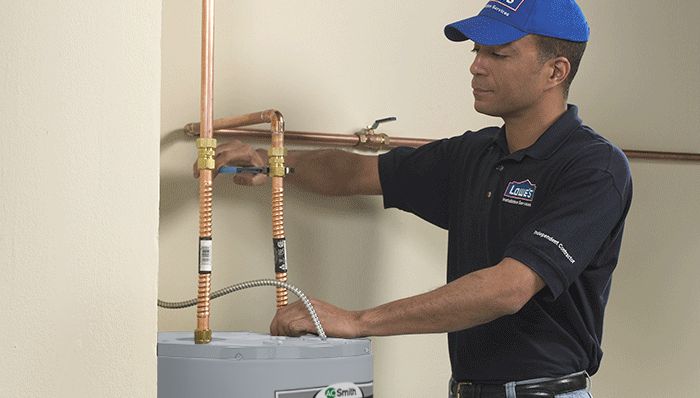Best Ways to Maintain Your Home's Hot Water System Successfully
Best Ways to Maintain Your Home's Hot Water System Successfully
Blog Article
This article down the page relating to Tips on Maintaining a Water Heater is seriously stimulating. Have a go and draw your own personal conclusions.

Hot water is important for day-to-day convenience, whether it's for a refreshing shower or cleaning dishes. To ensure your hot water system runs successfully and lasts longer, normal upkeep is vital. This post provides practical suggestions and understandings on just how to preserve your home's hot water system to avoid interruptions and expensive fixings.
Introduction
Preserving your home's warm water system might seem overwhelming, but with a couple of easy actions, you can guarantee it runs smoothly for many years ahead. This overview covers whatever from recognizing your warm water system to DIY maintenance ideas and recognizing when to call in expert aid.
Importance of Preserving Your Warm Water System
Normal upkeep not just extends the life expectancy of your warm water system yet additionally guarantees it operates efficiently. Overlooking upkeep can lead to decreased efficiency, higher energy expenses, and even premature failure of the system.
Indicators Your Warm Water System Demands Maintenance
Knowing when your hot water system needs attention can prevent major problems. Watch out for indications such as irregular water temperature level, odd sounds from the heating unit, or corroded water.
Purging the Hot Water Heater
Purging your hot water heater eliminates sediment buildup, improving effectiveness and extending its life.
Checking and Replacing Anode Rods
Anode rods prevent corrosion inside the container. Evaluating and replacing them when broken is crucial.
Facility Concerns Needing Expert Help
Examples include significant leakages, electric problems, or if your water heater is consistently underperforming.
Regular Expert Upkeep Perks
Professional maintenance can consist of complete assessments, tune-ups, and guaranteeing compliance with safety criteria.
Evaluating and Changing Temperature Setups
Changing the temperature setups guarantees optimal efficiency and security.
DIY Tips for Upkeep
You can perform numerous maintenance jobs yourself to maintain your hot water system in leading problem.
Checking for Leakages
Frequently check pipes and links for leaks, as these can bring about water damage and greater expenses.
Understanding Your Warm Water System
Before diving right into maintenance jobs, it's practical to understand the standard components of your hot water system. Normally, this includes the hot water heater itself, pipes, anode rods, and temperature level controls.
Regular Monthly Upkeep Tasks
Routine monthly checks can assist capture minor concerns before they rise.
Testing Stress Relief Valves
Examining the pressure safety valve guarantees it functions appropriately and prevents extreme stress accumulation.
Protecting Pipes
Insulating warm water pipelines minimizes warmth loss and can conserve energy.
When to Call a Specialist
While DIY maintenance is valuable, some issues call for professional competence.
Verdict
Regular maintenance of your home's warm water system is essential for effectiveness, durability, and cost savings. By adhering to these pointers and knowing when to seek expert aid, you can ensure a trustworthy supply of warm water without unexpected interruptions.
How to Maintain an Instant Hot Water Heater
Before tinkering with your hot water heater, make sure that it’s not powered on. You also have to turn off the main circuit breaker and shut off the main gas line to prevent accidents. Also turn off the water valves connected to your unit to prevent water from flowing into and out of the appliance. 2. When you’re done, you have to detach the purge valves’ caps. These look like the letter “T†and are situated on either side of the water valves. Doing so will release any pressure that has accumulated inside the valves while at the same time avoid hot water from shooting out and burning your skin. 3. When the purge valves’ caps are removed, you have to connect your hosing lines to the valves. Your unit should have come with three hoses but if it didn’t, you can purchase these things from any hardware or home repair shops. You can also get them from retail stores that sell water heating systems. Read the user’s manual and follow it to complete this task properly. When the hosing lines are connected, open the purge port’s valves. 4. You should never use harsh chemical cleaners or solutions when cleaning your unit. Make use of white vinegar instead. It should be undiluted and you’ll probably use about 2 gallons. 5. Now flush your water heater. This task should probably take about 40 minutes. We can’t give you specific directions for this because the procedure is carried out depending on the type, model and brand of your heater. With that being said, refer to the user’s manual. 6. When you’re done draining the unit, you have to turn off the purge port valves again. Remove the hosing lines that you earlier installed on each of the water valves. Put the valve caps (purge port) back in their respective places and be very careful so as not to damage the rubber discs that are found inside these caps. 7. Now that everything’s back in place, check your user’s manual again to find out how to reactivate your water heating system. 8. Once it is working, turn one of your hot water faucets on just to let air pass through the heater’s water supply pipes. Leave the tap on until water flows smoothly out of it. https://www.orrplumbing.com/blog/2014/september/how-to-maintain-an-instant-hot-water-heater/

As a devoted reader on Tips on Maintaining a Water Heater, I figured sharing that article post was sensible. Remember to pause to share this content if you liked it. I thank you for your readership.
Click Report this page